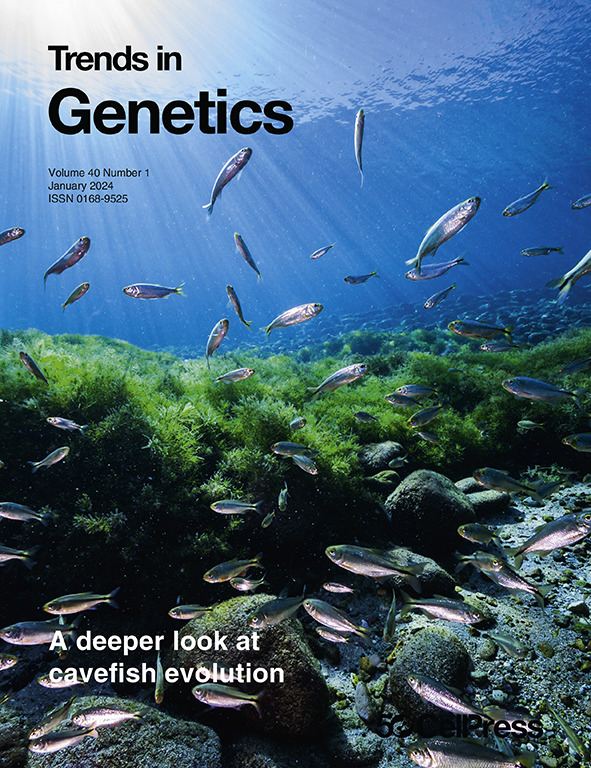Butterflies in your stomach? Not an issue for nearly 8000 species of fishes.
IF 13.6
2区 生物学
Q1 GENETICS & HEREDITY
引用次数: 0
Abstract
The gastric stomach is a hallmark of vertebrate evolution, yet is missing in nearly 25% of living fish species and some mammals. New work by Kato et al. shows how a cassette of genes relating to acid production, pepsins, cell adhesion, and developmental control are repeatedly lost in animals that have also lost their stomachs.
胃里有蝴蝶?对于近 8000 种鱼类来说,这不是问题。
胃是脊椎动物进化的标志,但在近 25% 的现生鱼类和一些哺乳动物中却没有胃。加藤等人的新研究表明,在失去胃的动物体内,与胃酸分泌、胃蛋白酶、细胞粘附和发育控制有关的基因盒是如何反复丢失的。
本文章由计算机程序翻译,如有差异,请以英文原文为准。
求助全文
约1分钟内获得全文
求助全文
来源期刊

Trends in Genetics
生物-遗传学
CiteScore
20.90
自引率
0.90%
发文量
160
审稿时长
6-12 weeks
期刊介绍:
Launched in 1985, Trends in Genetics swiftly established itself as a "must-read" for geneticists, offering concise, accessible articles covering a spectrum of topics from developmental biology to evolution. This reputation endures, making TiG a cherished resource in the genetic research community. While evolving with the field, the journal now embraces new areas like genomics, epigenetics, and computational genetics, alongside its continued coverage of traditional subjects such as transcriptional regulation, population genetics, and chromosome biology.
Despite expanding its scope, the core objective of TiG remains steadfast: to furnish researchers and students with high-quality, innovative reviews, commentaries, and discussions, fostering an appreciation for advances in genetic research. Each issue of TiG presents lively and up-to-date Reviews and Opinions, alongside shorter articles like Science & Society and Spotlight pieces. Invited from leading researchers, Reviews objectively chronicle recent developments, Opinions provide a forum for debate and hypothesis, and shorter articles explore the intersection of genetics with science and policy, as well as emerging ideas in the field. All articles undergo rigorous peer-review.
 求助内容:
求助内容: 应助结果提醒方式:
应助结果提醒方式:


